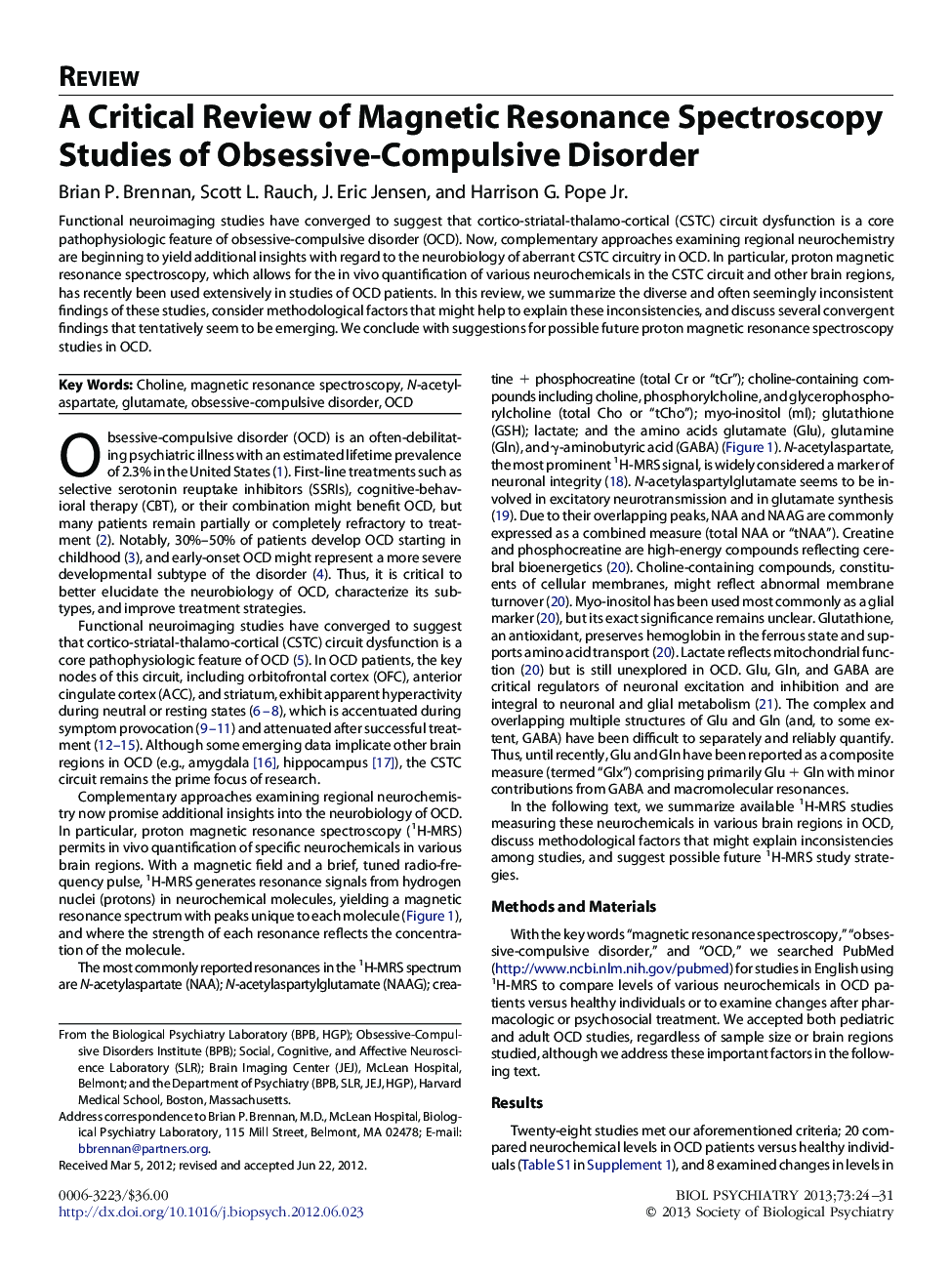| Article ID | Journal | Published Year | Pages | File Type |
|---|---|---|---|---|
| 4177987 | Biological Psychiatry | 2013 | 8 Pages |
Functional neuroimaging studies have converged to suggest that cortico-striatal-thalamo-cortical (CSTC) circuit dysfunction is a core pathophysiologic feature of obsessive-compulsive disorder (OCD). Now, complementary approaches examining regional neurochemistry are beginning to yield additional insights with regard to the neurobiology of aberrant CSTC circuitry in OCD. In particular, proton magnetic resonance spectroscopy, which allows for the in vivo quantification of various neurochemicals in the CSTC circuit and other brain regions, has recently been used extensively in studies of OCD patients. In this review, we summarize the diverse and often seemingly inconsistent findings of these studies, consider methodological factors that might help to explain these inconsistencies, and discuss several convergent findings that tentatively seem to be emerging. We conclude with suggestions for possible future proton magnetic resonance spectroscopy studies in OCD.
